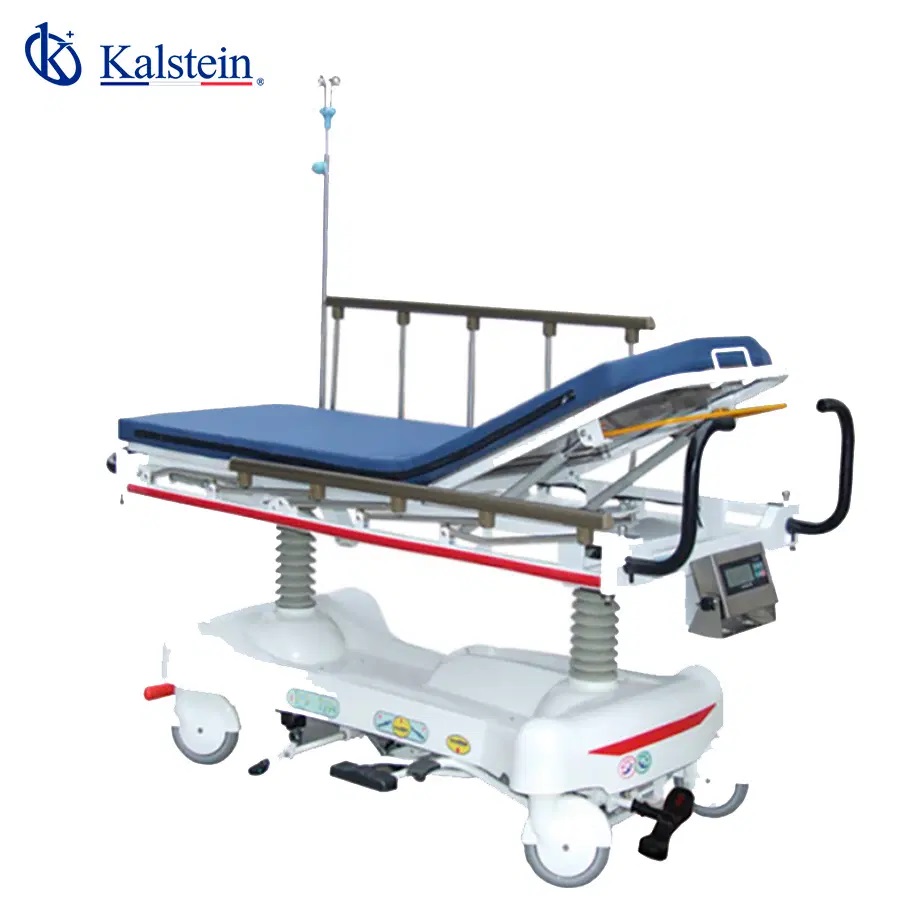In the healthcare sector, constant innovation and the development of new technologies are crucial for improving patient care and optimizing the work of medical professionals. One of the most outstanding tools in this field is the Hydraulic Transfer Stretcher, a device that has significantly transformed the way patient transfers are handled.
In this article, we will explore in detail the benefits, unique features, and how this stretcher solves specific problems in the medical environment.
Are you yearning for top-tier medical equipment, ready to enhance the efficiency of your laboratory? Visit https://kalstein.co.in/category-product/medical-line/medical-transfer-stretcher/ to explore our high-end catalog, packed with the best finds at the most competitive prices. Excellence marks our brand, we innovate and manufacture high-precision equipment, both reliable and durable to meet your needs. Why wait? Make your quick and secure online purchase, take the leap towards the future of medical technology today. https://kalstein.co.in/
Benefits of the Hydraulic Transfer Stretcher
Improved Patient Safety
One of the primary benefits of the hydraulic transfer stretcher is the enhanced safety for patients during transfers. Thanks to its hydraulic system, this stretcher allows for smooth and controlled movement, minimizing the risk of falls and injuries. This is especially important when handling patients with reduced mobility or those requiring special care.
Additionally, the stretcher is equipped with adjustable side rails that offer extra protection. These rails not only prevent falls but also provide a sense of security for the patient, which can reduce anxiety during the transfer.
Ease of Use for Medical Staff
The ergonomic design of the hydraulic transfer stretcher benefits not only the patients but also the medical staff. The hydraulic system allows for easy adjustment of the stretcher’s height, reducing the physical effort needed to move and lift patients. This is crucial for preventing work-related injuries among healthcare professionals, who often have to perform multiple patient transfers throughout their shifts.
The stretcher also features multi-directional wheels that make it easy to maneuver in confined spaces. This enables healthcare professionals to transport patients efficiently and without complications, even in the busiest hospital environments.
Unique Features of the Hydraulic Transfer Stretcher
Height and Position Adjustment
One of the most notable features of the hydraulic transfer stretcher is its ability to adjust the patient’s height and position precisely. The hydraulic system allows for effortless elevation or lowering of the stretcher, which is essential for adapting the stretcher to different medical procedures and patient needs.
This adjustability also facilitates the transfer of patients to and from other surfaces, such as beds, wheelchairs, and examination tables. The ability to adjust the height and position of the stretcher significantly enhances the efficiency and safety of these movements.
High-Quality and Durable Materials
Hydraulic transfer stretchers are made from high-quality materials that ensure their durability and strength. The stretcher’s structure is designed to withstand intensive use in hospital settings, guaranteeing a long service life and minimal maintenance.
The stretcher’s mattresses and surfaces are made from antimicrobial and easy-to-clean materials, helping to maintain a hygienic and safe environment for patients. These materials are also comfortable for patients, providing adequate support during transfers.
Solutions to Specific Problems
Reduction of Injuries to Patients and Staff
A common problem in the hospital environment is the high incidence of injuries among both patients and medical staff during transfers. Traditional stretchers often require considerable effort to move patients, which can result in musculoskeletal injuries.
The hydraulic transfer stretcher addresses this problem by allowing for safer and more efficient handling of patients. The hydraulic system reduces the need for physical lifting and moving of patients, minimizing the risk of injuries. This improvement in safety benefits both patients and medical staff.
Improved Operational Efficiency
Operational efficiency is critical in hospitals and healthcare centers, where every minute counts. Hydraulic transfer stretchers are designed to optimize the time and resources needed for patient transfers. The ease of adjustment and maneuverability of these stretchers allow for quick and hassle-free transfers.
This efficiency not only enhances the patient experience but also enables medical staff to spend more time on other important tasks, improving the overall quality of care.
Health Innovation: A Promising Future
Integration of Advanced Technology
The hydraulic transfer stretcher represents a significant advancement in the integration of advanced technology in healthcare. Future innovations in this field could include automated systems that allow for even more precise and comfortable control of stretcher movements.
Moreover, the incorporation of sensors and monitoring devices into the stretcher could provide real-time data on the patient’s condition during the transfer. This information would be invaluable to healthcare professionals, enabling them to make informed decisions and improve patient care.
Sustainability and Energy Efficiency
Another area of innovation is the sustainability and energy efficiency of hydraulic transfer stretchers. Manufacturers are exploring the use of more sustainable materials and hydraulic systems that require less energy to operate. These advancements will not only reduce the environmental impact of the stretchers but also lower operational costs for healthcare facilities.
The Importance of the Hydraulic Transfer Stretcher
In summary, the hydraulic transfer stretcher is an essential tool in the modern medical environment. Its numerous benefits, unique features, and ability to solve specific problems make it a valuable investment for any hospital or healthcare center.
By adopting this innovative technology, healthcare professionals can significantly improve the safety and efficiency of patient handling, while also paving the way for future innovations in healthcare.


